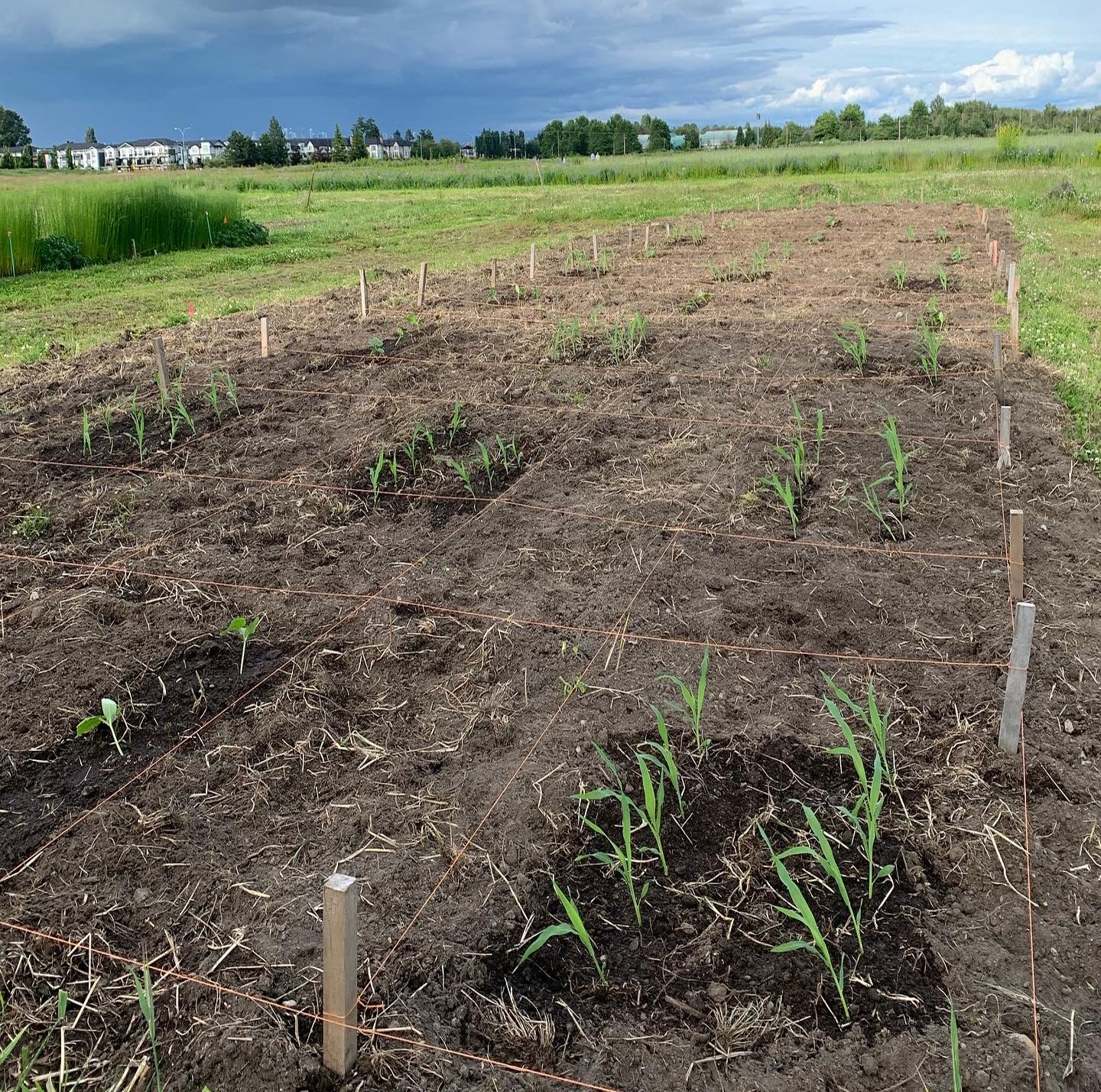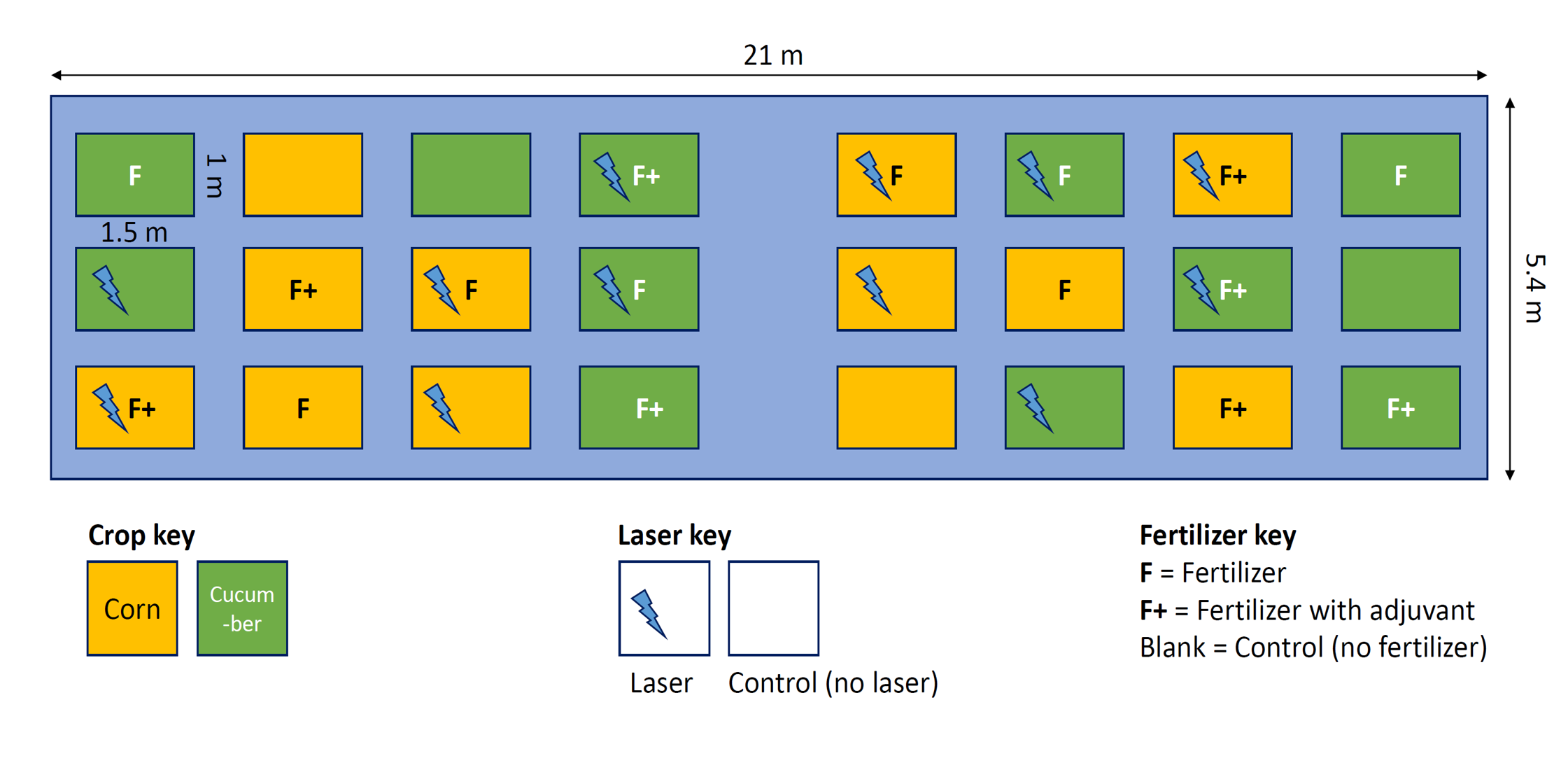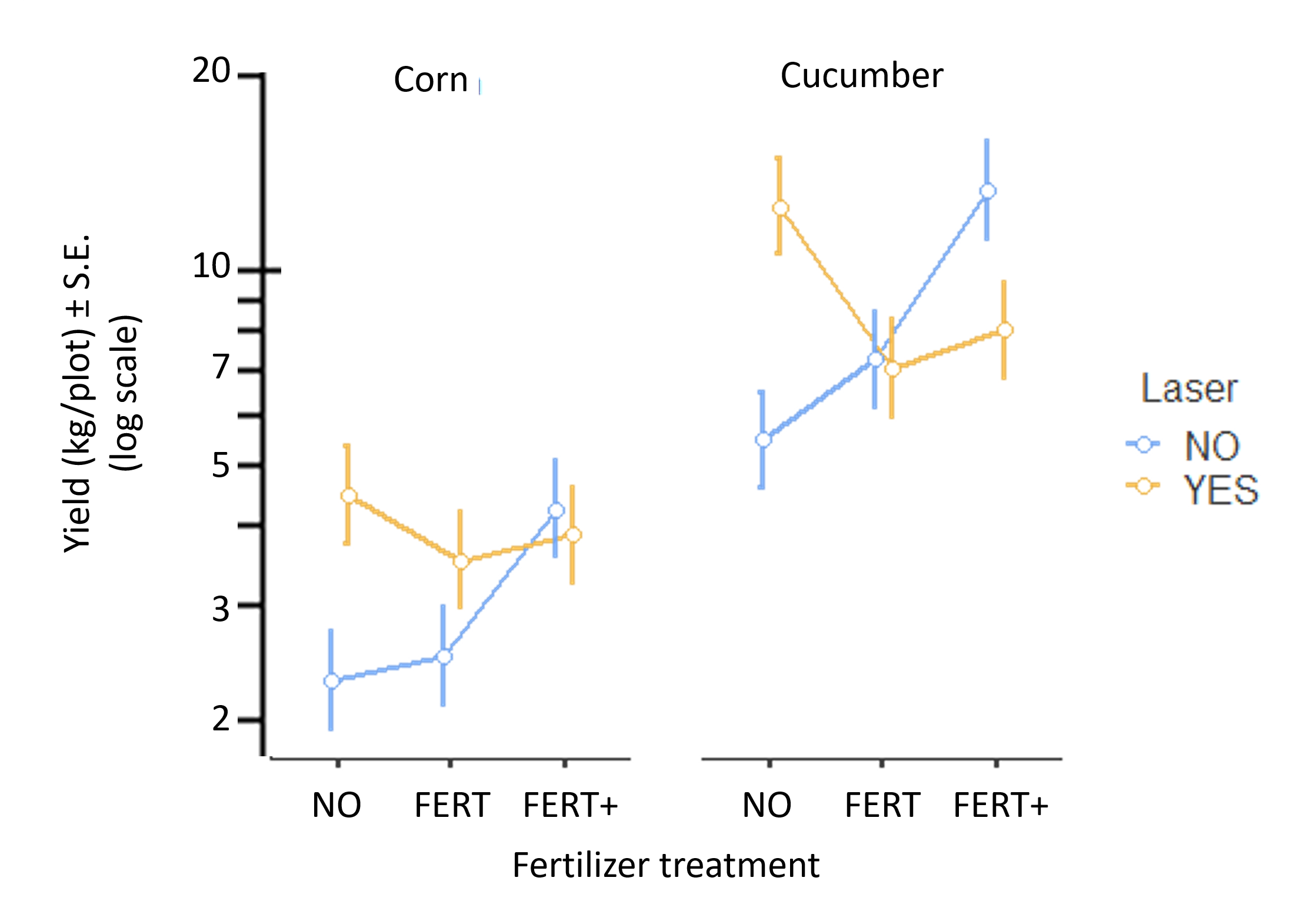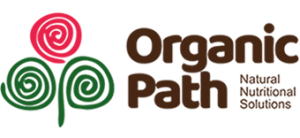

Sustainable Agriculture Student Research Project
Effects of laser irradiation, organic fertilizer, and adjuvant on corn and cucumber yieldNikita Ershov, Department of Sustainable Agriculture and Food Systems, 2020 |
Introduction
- Laser radiation provides a source of coherent photons, representing an energy input that can have biological effects on crop seed.
- Possible benefits of laser seed treatment include growth stimulation, improved germination, and greater disease resistance.
- There is growing interest in laser seed treatment applications for sustainable agriculture.
- Laser treatments may be used in combination with organic fertilizers.
- This study assessed compatibility of laser seed treatment with locally-developed foliar fertilizer products for use on organic farms.
Objectives
- Determine whether laser irradiation of seeds increases yield and biomass of corn and cucumber.
- Find out if laser treatment is more effective when combined with fertilizer and adjuvant application.
Methods
Germination Trial
- Sweet corn (Zea mays cv. ‘Top Hat’), cucumber (Cucumis sativus cv. ‘Tender Green’), and bell pepper (Capsicum annuum ‘Rainbow Mix’) seeds exposed to laser irradiation for 0, 15, 30, 60 or 120 s were planted in potting soil in plug trays in a greenhouse on 28 May, 2020 (Table 1).
- Seedlings were treated with foliar fertilizer (Q Algy, Q Energy and adjuvant, each at 3 ml/l, Organic Path, Vancouver, BC).
- Seedling height and survival was recorded on 12 June, 2020.
| Crop | Cells/Tray | Density (plants/m2) | Seeds/plot | Reps | Seeds |
|---|---|---|---|---|---|
| Corn | 72 | 518 | 24 | 5 | 600 |
| Cucumber | 36 | 259 | 4 | 10 | 200 |
| Pepper | 72 | 518 | 24 | 4 | 480 |
Field Study
-
Full-factorial randomized complete block design (Fig. 1)
Factors:
-
Crop (10 corn or three cucumber per plot, transplanted 13 June, 2020)
-
Laser pre-treatment (none or 15 and 120 s for corn and cucumber, respectively)
-
Fertilizer (none or weekly foliar applications with or without adjuvant) (Table 2)


Figure 1. Experimental design and layout, with field plots after transplanting (top) and plot treatment map (bottom).
| Foliar application rate (ml/l) | ||||
|---|---|---|---|---|
| Treatment | Growth STAGE | Q Algy* | Q Energy* | Adjuvant* |
| None (NO) | All | - | - | - |
| Fertilizer (FERT) |
Transplant | 4 | 4 | - |
| Vegetative | 4 | 3 | - | |
| Reproductive | 5 | 5 | - | |
| Fertilizer & Adjuvant (FERT+) |
Transplant | 4 | 4 | 4 |
| Vegetative | 4 | 3 | 4 | |
| Reproductive | 5 | 5 | 5 | |
*Q Algy is intended to increase stress resistance and improve metabolism. Q Energy adds nutrients and minerals. The adjuvant is an experimental product intended to increase fertilizer efficiency. All products from Organic Path, Vancouver, BC.
- All plots were irrigated and weeded as needed.
- Cucumber was harvested five times in July and August; corn was harvested in late August.
- Log10-transformed yield data were analyzed by ANOVA using the jamovi interface for the R statistical computing environment (ɑ = 0.05).
Results
- No effect of laser treatment on seedling growth or survival was detected in the germination trial. Pepper seedlings were discarded due to poor germination.
- Laser irradiation of seeds increased yield of both crops when no fertilizer was added (Fig. 2).
- Adding adjuvant to fertilizer increased yield of both crops when seeds were not treated with laser irradiation (Fig. 2).
- Combining fertilizer application with laser seed treatment offered no additional yield benefit.
Fertilizer + Adjuvant OR Laser treatment
≥
Fertilizer + Adjuvant AND Laser treatment

Figure 2. Interaction between laser seed treatment and foliar fertilizer treatment on corn and cucumber yield (log-transformed). FERT and FERT+ are foliar fertilizer treatments with and without adjuvant, respectively (Table 2).
Conclusion
Laser seed treatment increased yield of both corn and cucumber. Foliar fertilizer treatments combined with adjuvant also increased yields. A negative interaction was observed between laser treatment and fertilizer application, such that no additional benefit was observed when the two treatments were combined. Laser seed treatment may be most effective under low nutrient conditions.
Acknowledgments
Mike Bomford provided help, support and guidance throughout the experiment. All tested products were supplied by Organic Path. Tyler Mackay and Mark Shuster (Organic Path) provided support and recommended treatment application rates. Jerry Cwiertnia provided laser treatment of organic seed from the San Diego Seed Company.
Funding and Support:
